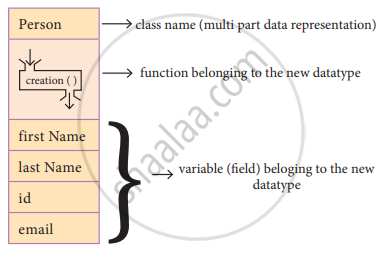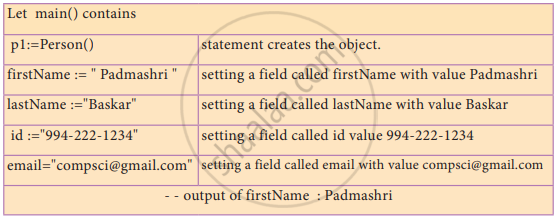Advertisements
Advertisements
प्रश्न
How will you access the multi-item? Explain with example.
उत्तर
The list allows data abstraction in that you can give a name to a set of memory cells. For instance, in the game Mastermind, you must keep track of a list of four colors that the player guesses. Instead of using four separate variables (color 1, color2, color3, and color4), you can use a single variable ‘Predict’,
e.g.,
Predict = [‘red’, ‘blue’, ‘green’, ’green’]
What lists do not allow us to do is name the various parts of a multi-item object. In the case of a Predict, you don’t really need to name the parts:
using an index to get to each color suffices.
But in the case of something more complex, like a person, we have a multi-item object where each ‘item’ is a named thing: the firstName, the Last Name, the id, and the email. One could use a list to represent a person.

Person = [‘Padmashri’, ‘Baskar’, ‘994 – 222 – 1234’, ‘[email protected]’]
but such a representation doesn’t explicitly specify what each part represents.
For this problem instead of using a list, you can use the structure constmct (In OOP languages it’s called class construct) to represent multi-part objects where each part is named (given a name). Consider the following pseudo-code:
class Person:
creation( )
firstName: = “”
lastName: = ” ”
id: = ” ”
email : = “”
The new data type Person is pictorially represented as

The class (structure) constmct defines the form for multi-part objects that represent a person. Its definition adds a new data type, in this case, a type named Person. Once defined, we can create new variables (instances) of the type. In this example, Person is referred to as a class or a type, while p1 is referred to as an object or an instance. You can think of class Person as a cookie-cutter and p1 as a particular cookie. Using the cookie cutter you can make many cookies. Same way using class you can create many objects of that type.
